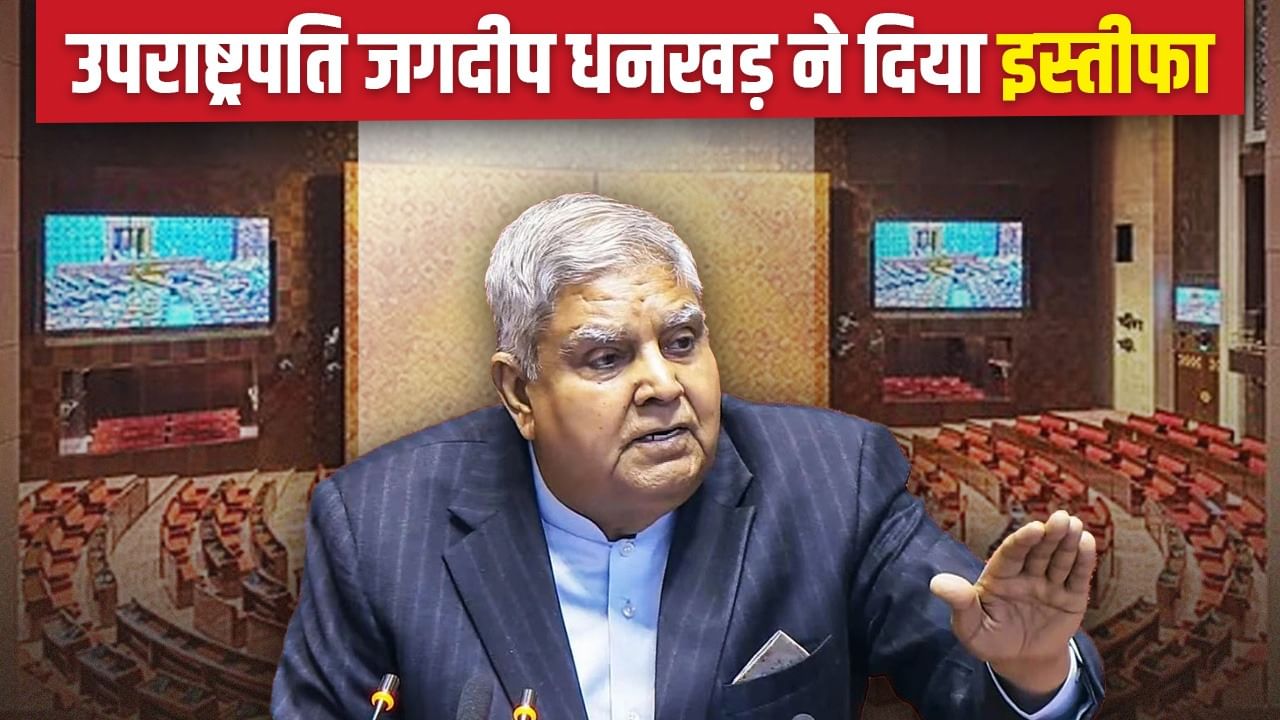On the very first day of the monsoon session, on Monday, Vice President Jagdeep Dhankhar resigned from healthy reasons.
Vice President Jagdeep Dhankhar suddenly resigned on the very first day of the monsoon session of Parliament. He has described his health as the main reason in the first line of his resignation. He was present in Parliament on the first day as the Chairman of Rajya Sabha. The information about the resignation became public late in the evening. He has also mentioned Article 67 (A) of the Indian Constitution in his resignation. Under which he has resigned. He has addressed the letter of resignation to the President.
The real reason for the resignation, whether it is health or politics, some important questions arise, which everyone should know. Know, what is the work of the Vice President, what is the process of his resignation, who will take over after the resignation, what is Article 67 (A) and what other important facts related to it are.
Why is the post of Vice President necessary?
The post of Vice President is very important in the constitutional structure of India. The Vice President is not only the Chairman of the Rajya Sabha, but also the responsibility of the acting President in the event of the absence or inability of the President. Maintaining discipline in the House, allowing members to speak and controlling the debate is part of their responsibility. If a bill or proposal is unconstitutional, then there is power to stop it.
The Vice President becomes the acting President in the event of the President’s death, resignation, dismissal, or traveling abroad. In such a situation, he follows the rights and responsibilities of the President. In such a situation, sudden resignation vacates an important post. If the President accepts resignation under the system, the Election Commission of India will have to conduct the Vice President election within six months. This process is similar to the President’s election.
What does the Constitution say on the resignation of the Vice President?
According to Article 67 (A) of the Indian Constitution, the Vice President may resign from his post. This resignation is addressed to the President. It is clearly written in the constitution that under Article 67 (A), the Vice President can give his resignation in writing to the President. As the current Vice President Jagdeep Dhankhar has written a letter to the President on 21 July 2025. While his term is still almost two years left. As soon as the President accepts that resignation, the post of Vice President is declared vacant.
Who will handle the responsibility after resignation?
When the post of Vice President becomes vacant, according to the Constitution, the Vice President of Rajya Sabha has to preside over the proceedings of the Rajya Sabha. After the resignation of the Vice President, the Deputy Chairman works as the Chairman of the Rajya Sabha until the new Vice President is elected. This means that the present Deputy Chairman Harivansh Narayan Singh will see the work as the Chairman as soon as the resignation is approved. The further process is also recorded in the Constitution. If the post of Deputy Chairman is vacant or they are not available, Rajya Sabha can appoint any other member of its members who will temporarily fulfill this responsibility.
How is the new Vice President elected?
According to the Constitution, it is necessary to go to a new election within six months of the vacancy of the post of Vice President. The election process is the same as the presidential election, in which members of both houses of Parliament i.e. Lok Sabha and Rajya Sabha vote. Election notification is issued by the Election Commission of India.
What is Article 67 (A)?
Article 67 (a) explains the process of resignation of the Vice President. The following things are important under this.
- The resignation can only be given to the President, not to anyone else.
- Resignation should be in writing.
- The post becomes vacant as soon as the resignation is accepted.
- After the resignation, the Deputy Chairman of the Rajya Sabha becomes the Acting Chairman till the new Vice President is elected.
- Some other important facts related to the resignation of the Vice President
- The tenure of the Vice President is five years, but he may resign or leave the post for other reasons.
- The Vice President can also be removed by the special majority of both houses of Parliament, but resignation is a voluntary process.
- If the post of President becomes vacant, Vice President becomes the acting President. But if the Vice President has resigned, then this responsibility gets to the Chief Justice.
- Till now VV as Vice President in India Giri resigned, who had to contest the presidential election.
The Constitution of India has made the process of resignation of the Vice President completely clear and transparent. Under Article 67 (A), the Vice President has to resign to the President. After the resignation, the Deputy Chairman of the Rajya Sabha takes over the responsibility and the new Vice President is elected within six months. This system shows the democratic and constitutional strength of the country, so that the transfer of power can be done smoothly.
Also read:
